What are succulents?
Before understanding the varieties of succulents, let's define this term.
Succulents - representatives of the flora with special tissues that store water. Various families belong to this category: fatty, aroid, bromeliad, cactus, euphorbia. Methods of extraction, preservation, saving of life-giving moisture are different: developed root system, fleshy leaves, ribbed stems, pubescent surface of stems or leaves, wax bloom.
Crassula
One of the most popular on the territory of the CIS species - Crassula, she is also a fat woman. It belongs to ordinary indoor flowers, has a tree-like shape, and multiplies easily. The most common subspecies is Crassula Ovata, popularly called the money tree.
Crassula hobbit looks spectacular with unusual elongated leaves, as if rolled into a tube. There is also a shape - it looks like an ordinary bastard, but the leaves on the trunk are not round, but pointed.
In the photo, a popular representative of the family is a fat woman
Spurge
The most numerous representatives of the Euphorbiaceae family living in houses and apartments are triangular and white-veined. Less common decorative options are the head of a jellyfish (the processes on the stem resemble tentacles), obese (a ball that resembles a cactus without thorns).
Stapelia
The stems are unremarkable, but the appearance of the flowers sets it apart from many other indoor plants. The flower resembles a star, it comes in completely different shades: from pastel to bright.
But there is one minus - unpleasant odor during flowering.
Echeveria
Another name is echeveria. In the course of evolution, it has lost its trunk, looks like a rosette of many leaves growing from the center. The shade and edges of the leaves differ from species to species:
- agave - pointed ends of a pink hue (reminiscent of young people),
- graceful - green-blue fleshy leaves (imitates a stone rose),
- humpback - flat processes in the form of a rhombus.
Aloe
This succulent has got its distribution in the interior not only due to ease of care, but also due to its healing properties. A familiar tree that often grows in the apartments of grandmothers is called aloe tree.
More decorative species - Vera, Jackson, spinous, juvenile look like bushes growing from the soil.
Haworthia
Some confuse them with small, leafy aloes (aloe even has a subspecies called havortia). However, the Haworthia belong to a different family - the Xanthorrhea, and apart from their appearance they have nothing in common with aloe.
The main detail for which these flowers are loved - white growths on the outside of the leaves. Some specimens (pearl, drawn) are covered with growths inside and outside.
Rowley's godson
They are referred to as ampelous succulents: they are thin creeping twigs with pea-leaves on them. There are solid green or variegated (with white or yellow dots, stripes).
In the photo, Rowley's godsome
Kalanchoe
The subspecies have stem, flowering succulents. The most popular are Kalanchoe pinnate (with small "children" on the edges of sharp leaves) or Morgana (flowering subspecies with round leaves).
Of unusual representatives you can distinguish felt (pubescent leaves), paniculate-flowered (similar to Echeveria).
Adenium
A beautiful tree with a thick trunk, a sparse crown on the crown and bright flowers. Obese, Arabic or Multiflorum look like a bonsai in and of themselves without requiring complex shaping.
Lithops or argyroderma
The second name is living stones. One plant consists of two dense, pebble-like leaves. During flowering, a bud appears between them on a leg.
They look best in a composition of many units.
How to plant and propagate?
Before replanting any type of purchased succulent into a new pot, you need to prepare the soil for it. On sale you will find numerous ready-made mixtures, but not all manufacturers are responsible for their preparation, keep the proportions.
Therefore, it is safer to prepare the ground at home. The recipes here are about the same as variations of borscht from different housewives, but the main thing to learn: the soil should be "poor" and loose.
The easiest way is to mix 1 part of sod land, 1 part of peat substrate, 1 part of baking powder - chips of brick or stone, river sand, purchased perlite, vermiculite, expanded clay.
Plants are transplanted as needed, it is better to plan a transplant for the spring (from March-April) or summer.
In the photo, a variant of propagation by leaves
The second nuance - reproduction... The process is different for each species, let's look at the main variations:
- Leaves... Most succulents are distinguished by their ability to grow from a leaf - the process is not quick, but at the same time you can grow a large number of plants at once.
- Cuttings... The method is possible only for stem varieties, it is preferred as an acceleration in the cultivation of a new flower. A branch with several leaves is cut off, stuck into the ground or vermiculite, watered and left: soon the root will form, the active growth phase will begin.
- Children... Some varieties form babies on themselves: for example, Kalanchoe. If you use these crumbs, deposited in the ground, they will soon become independent representatives of the species.
- Seeds... Slowest method, but facilitates transportation from other countries and continents.
Important! Containers for succulents must necessarily have drainage holes or a thick drainage layer of coarse claydite so that water does not stagnate in the roots.
In what conditions should they be kept?
Lighting
Since in the wild these are residents of hot, arid regions, to deal with succulents at home you should ensure that they are constantly exposed to light... One of the options is to put it on a windowsill, but it is better to protect it from direct sunlight - the tips will start to “burn” and change in color.
If it is not possible to grow in the sun, but there are a lot of succulents - it is recommended to supplement the lighting with a special phyto-lamp.
Air
It is better to grow thrifty plants in conditions of low humidity: succulents will more easily tolerate dry hot air from a battery than wet air in a bathroom.
Temperature
In a familiar climate, many representatives of the species have developed the ability for CAM photosynthesis: that is, the main metabolism in their cells occurs during the cool night time. Therefore, at home, it is also advisable to provide a large temperature difference - it is hot during the day, cold at night (but you should not freeze them).
In the summer, calmly take the pots out to the street or balcony - the flowers grow well in the fresh air.In an open area, you don't even need to water them; summer rain is enough.
Important! It is not worth keeping succulents outside in a wet cold autumn, they do not tolerate waterlogging well.
How to care?
Even despite the supply of water in the cages and the ability to conserve it, the group still needs regular watering. It is most correct to observe the soil - hold a wooden stick near the pot and pierce a layer of 1.5-2 cm from the surface with it. If this whole space is dry, you can water it. Wet - Moisturize later.
Important! There is an unspoken rule: it is better to skip watering than overflow.
It is also advisable to avoid severe drying out: if the leaves have withered, become lethargic, it means that too much time has passed between topping up of water.
Fertilizers will help to provide comfortable conditions for plants.: feeding is done only during the growth period (March-October), non-nitrogenous formulations are used for this. The concentration should be low (using universal divide by 2), water with vitamins should be no more than once a month.
Beautiful design and composition options
Most often, you can see succulents on sale in florariums: special transparent vessels for growing them. As a container, you can use a regular aquarium or a special jar created for flowers.
Original compositions look no less impressive in beautiful dishes: a pair of tea, a tray, a teapot. Suitable containers of large and small sizes, from any material: from coffee mugs for espresso, to enamel basins.
Ampel representatives look great in pot-heads: the plant will replace a fancy hairstyle with long hair or a protruding hedgehog. Bonsai are formed from stem species, Crassula Hobbit looks especially good in this design.
The most advanced growers can collect a green picture from live cuttings: it will fit perfectly into eco-style.
In the photo there is a decorated florarium
How do they look in the interior?
Succulents are versatile plants for any room. They do not take up much space, they are conveniently placed on desktops, narrow window sills, small shelves, book shelves.
In the design of the living room, the composition in a beautiful florarium will take root on coffee table, in the bedroom - on bedside table... For the kitchen, you can make or purchase special pots with magnets and set up a garden on the refrigerator.
Several containers in the nursery will teach the kid how to take care of the green inhabitants on their own.
Some shade-loving varieties of succulents will take root in the bathroom, but they should be kept away from water sources.
In the photo there is a green painting on the table
Succulents are loved by children and adults, beginners and experienced flower growers: they do not require serious care, please with their shapes and colors, and are easily adaptable to any conditions.

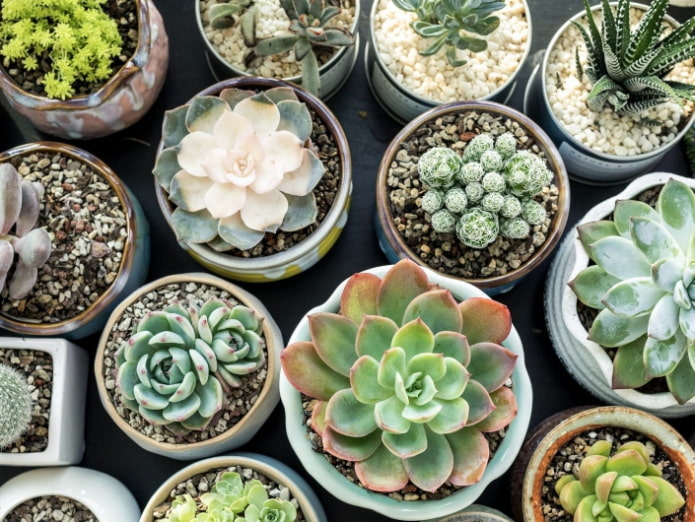
 10 practical tips for arranging a small kitchen in the country
10 practical tips for arranging a small kitchen in the country
 12 simple ideas for a small garden that will make it visually spacious
12 simple ideas for a small garden that will make it visually spacious

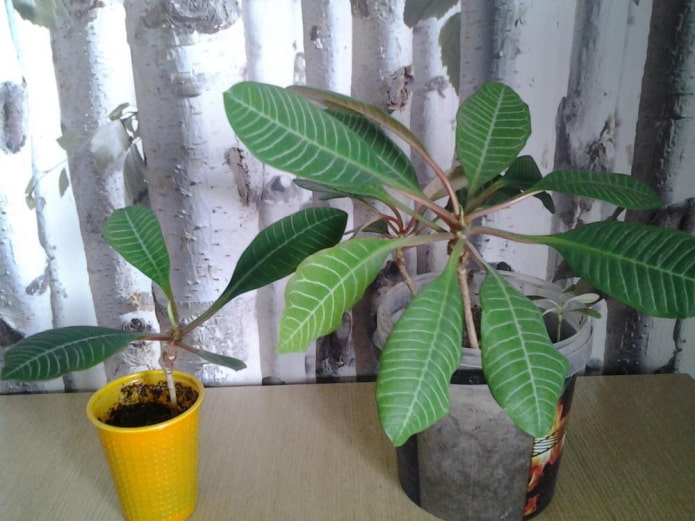
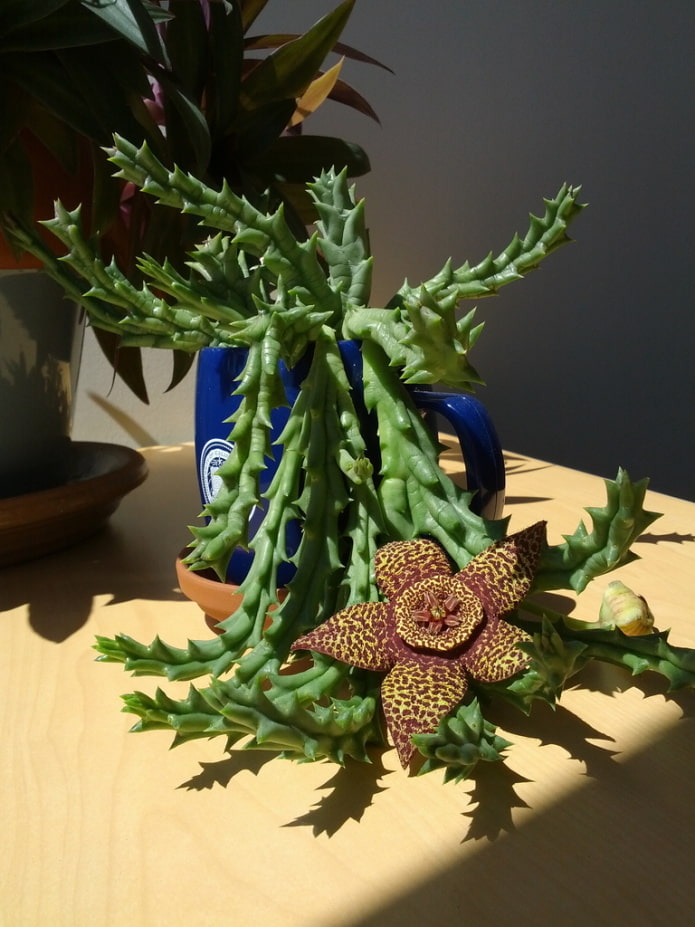

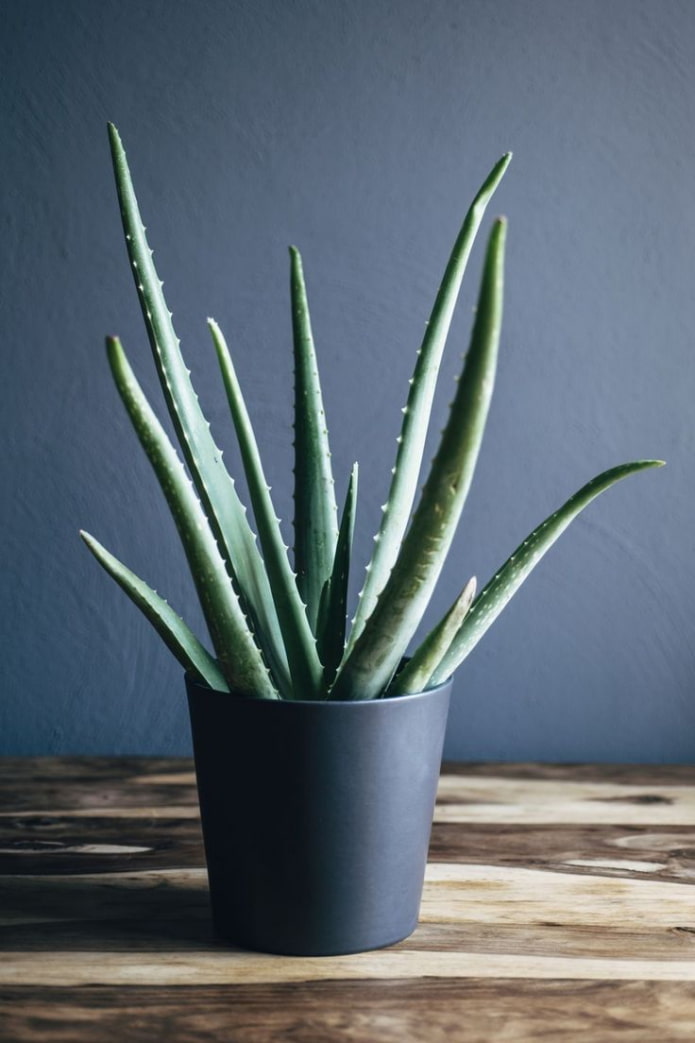
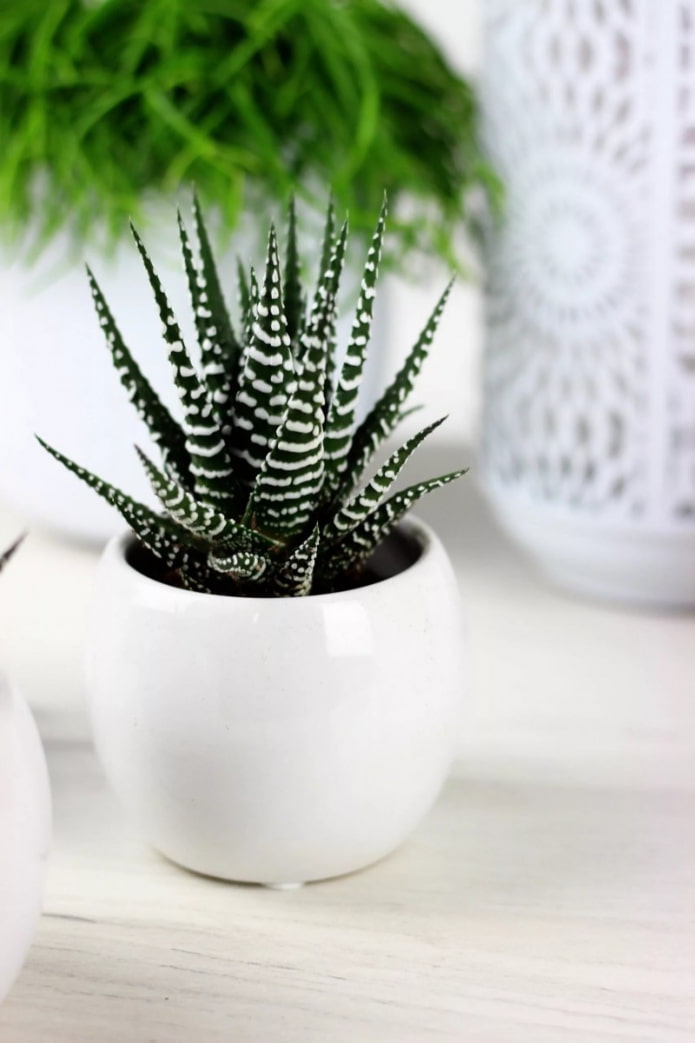
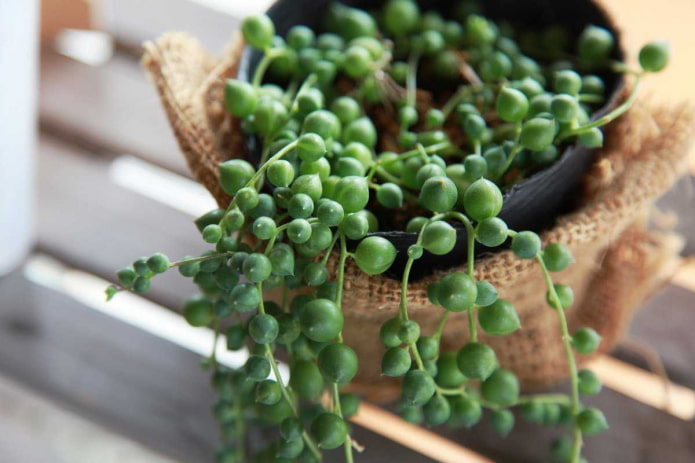
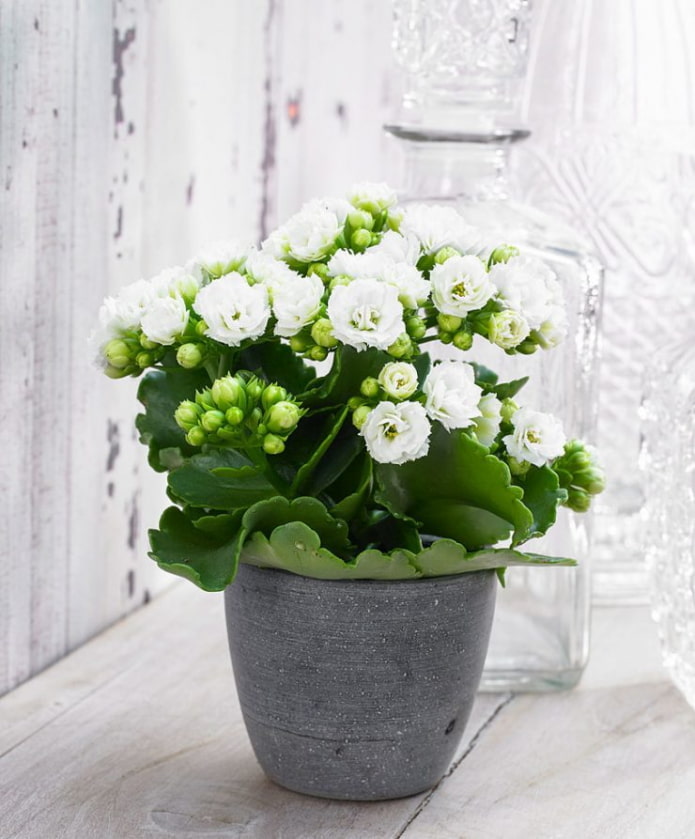
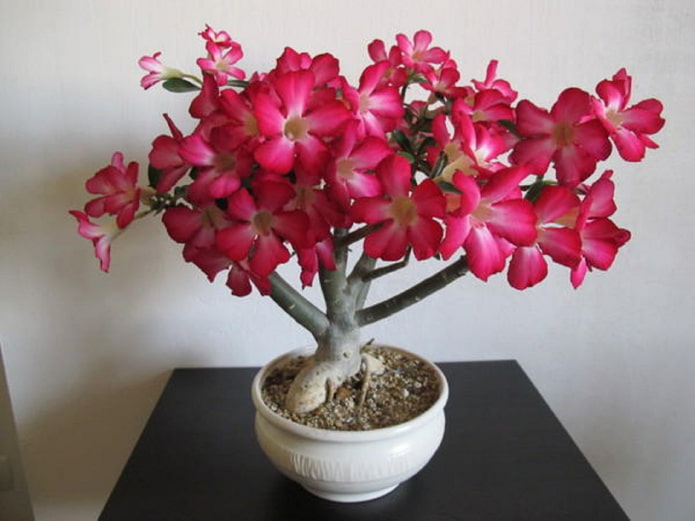
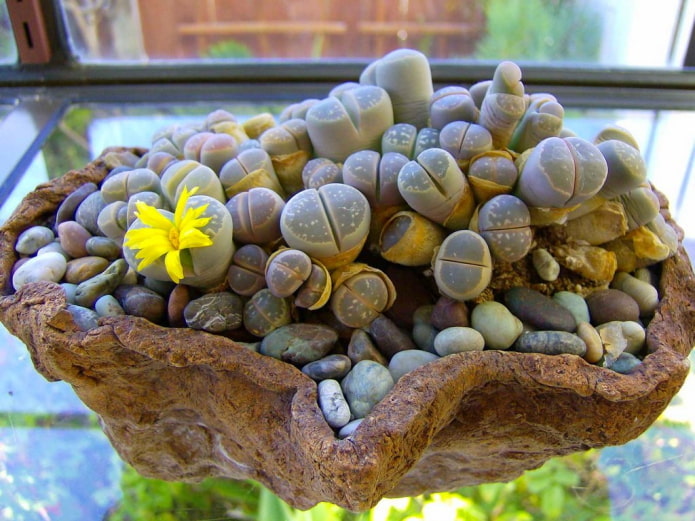
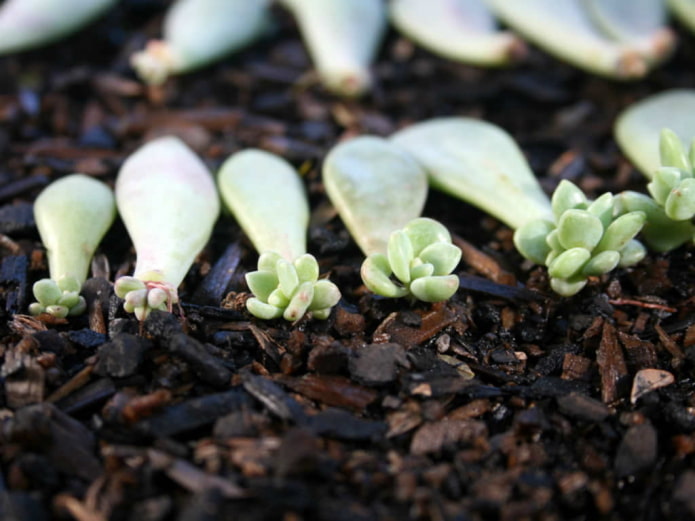
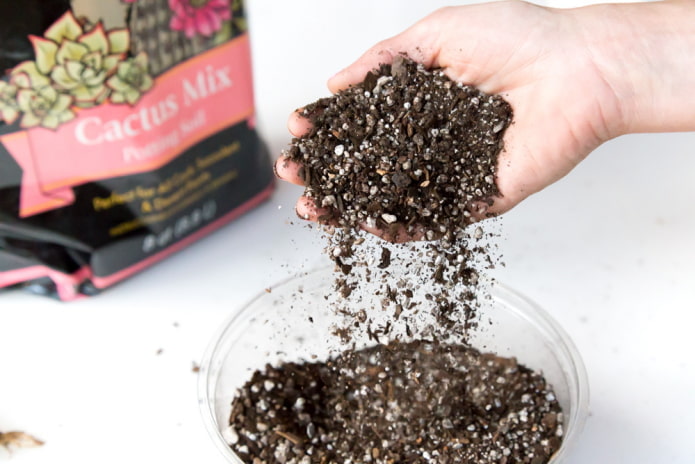
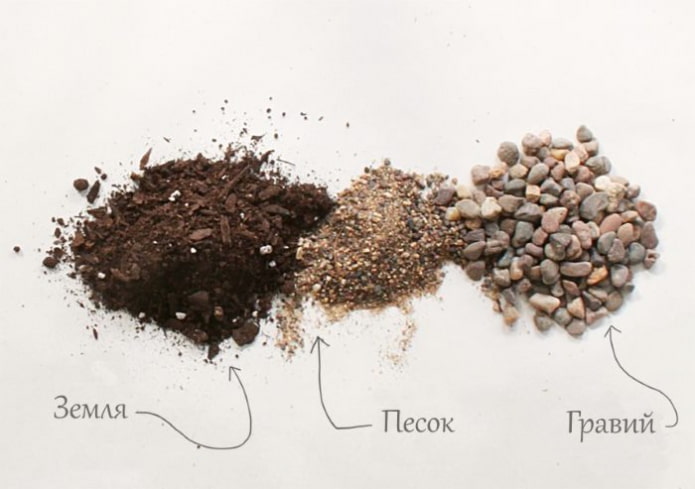
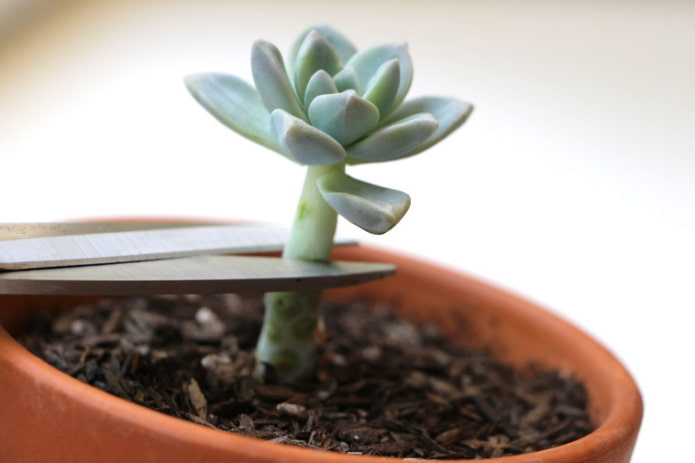
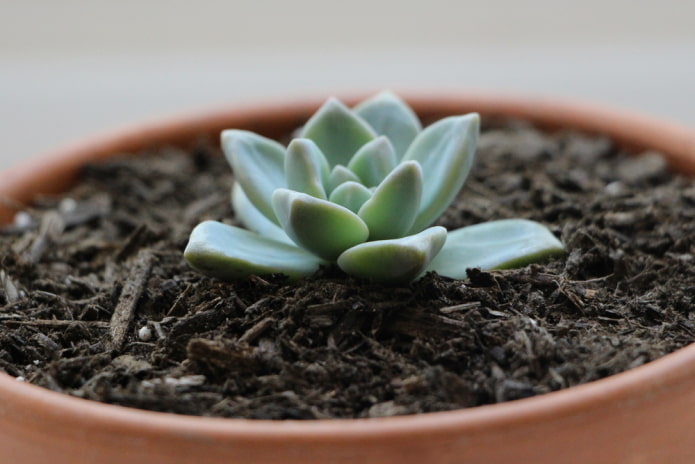
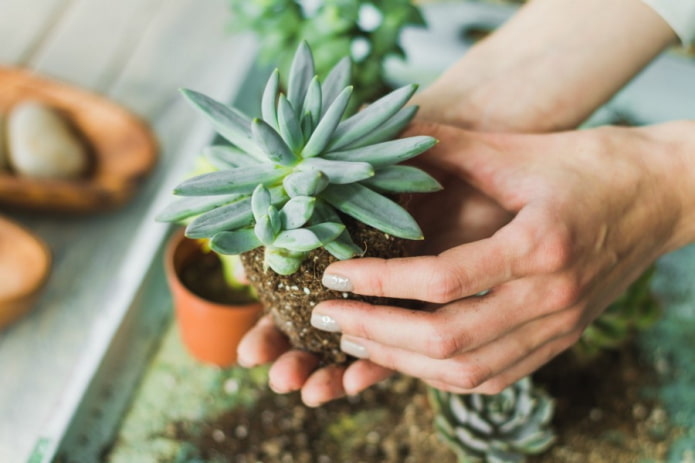
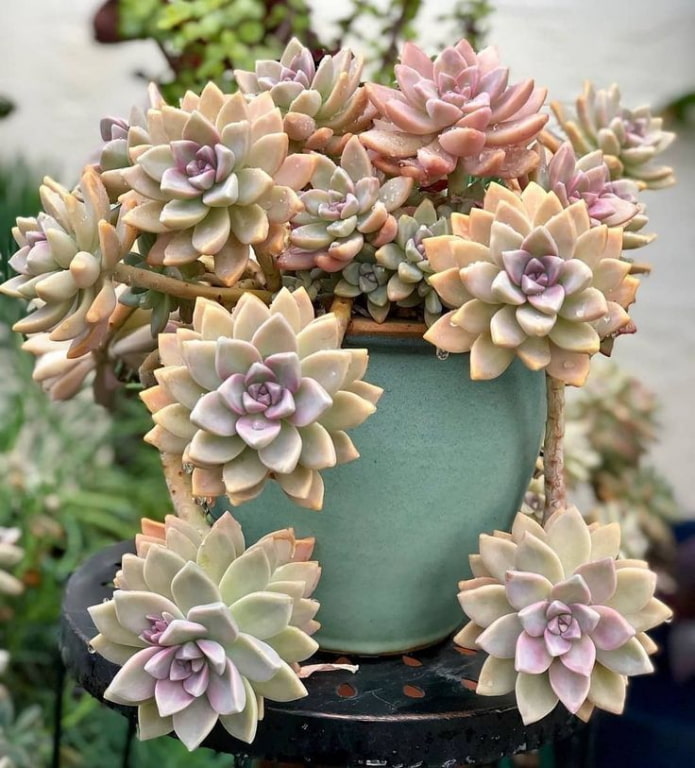
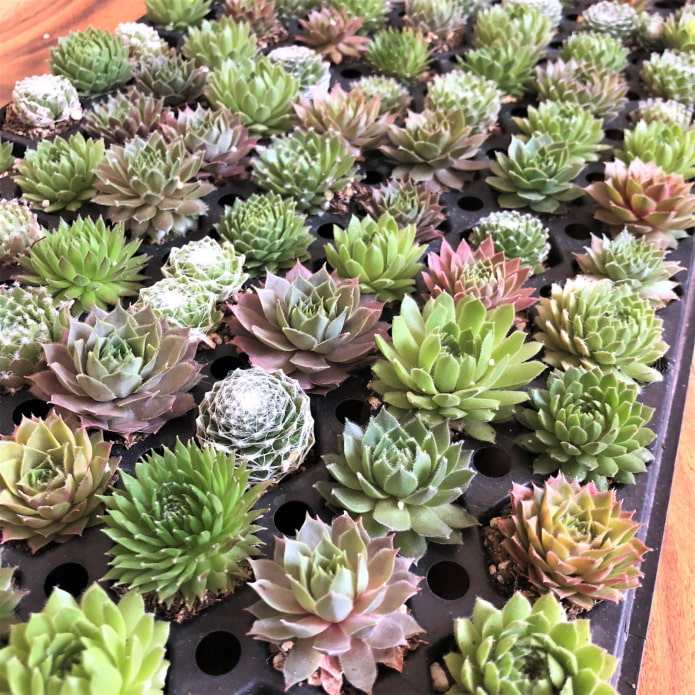
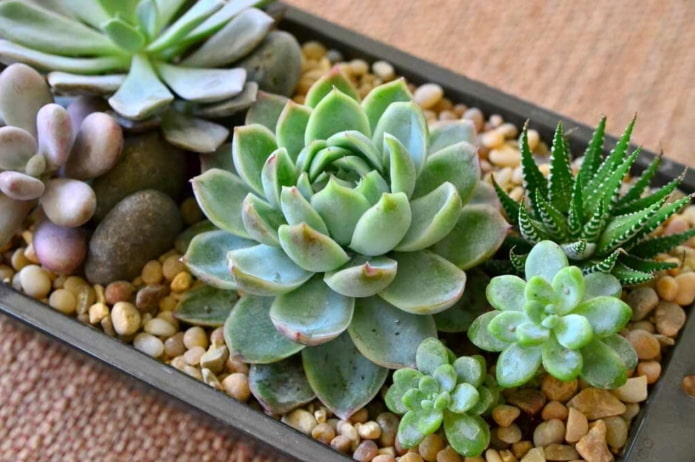
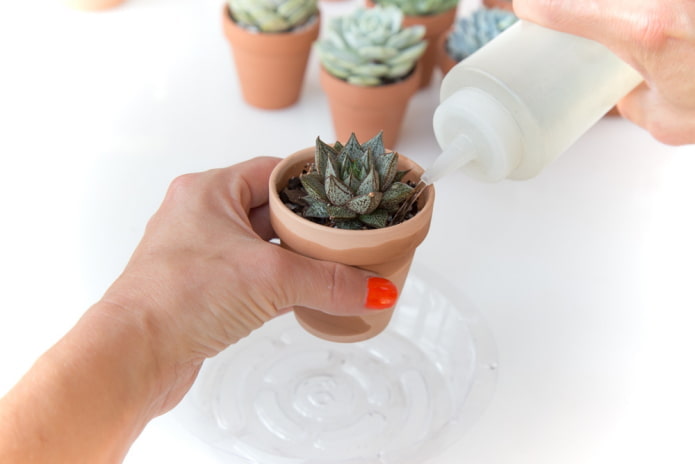
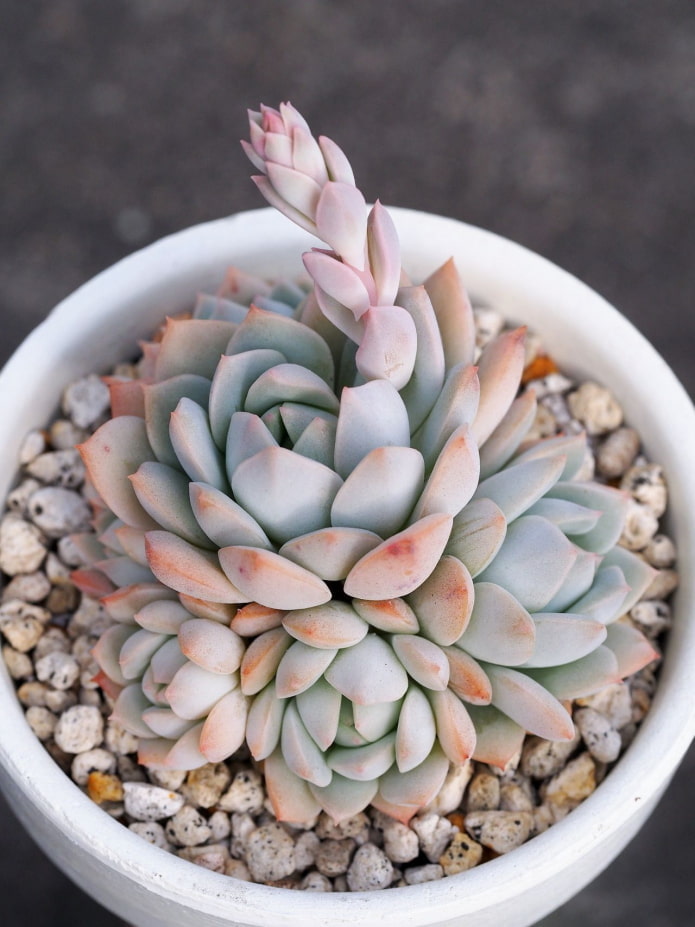
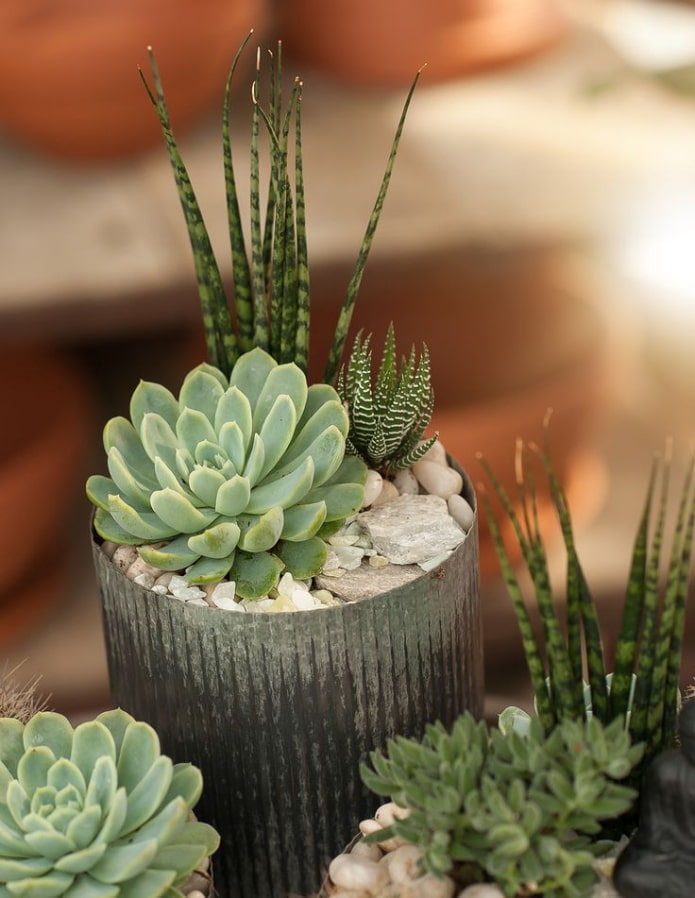

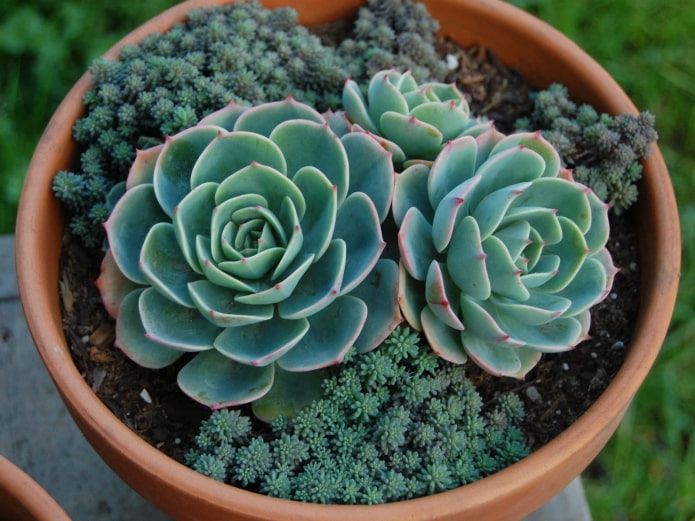
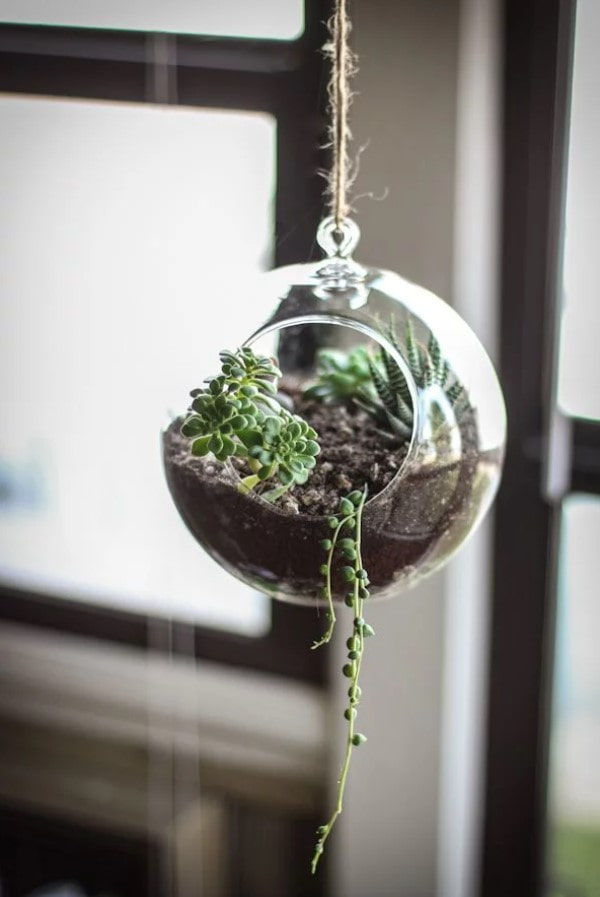
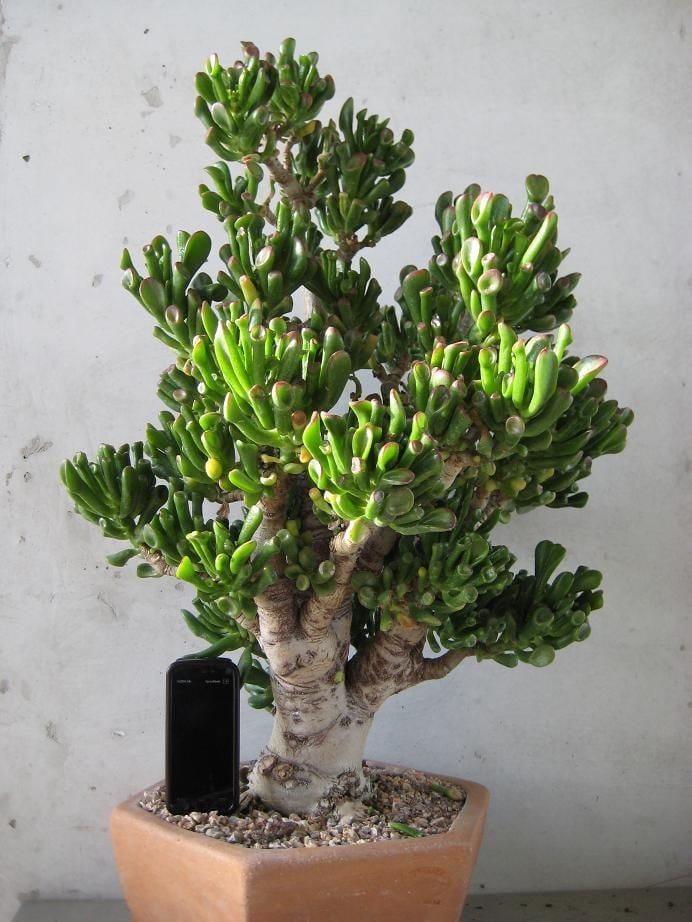

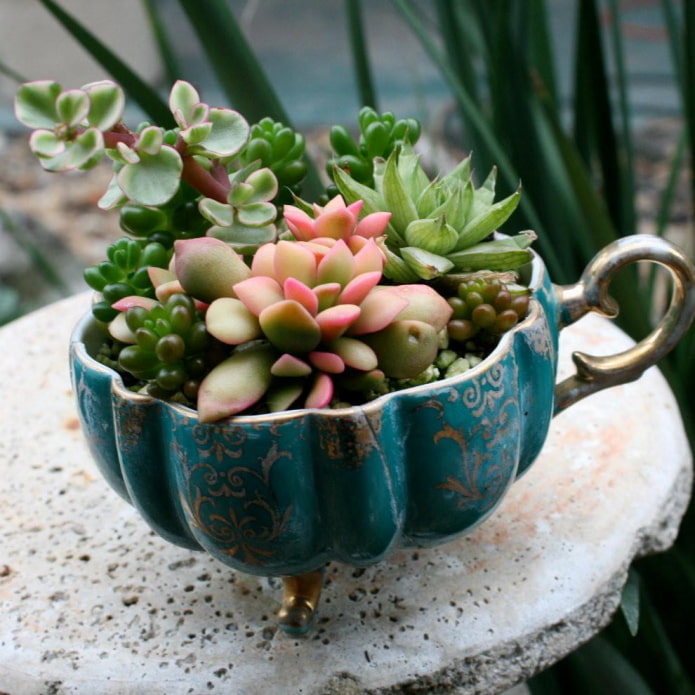
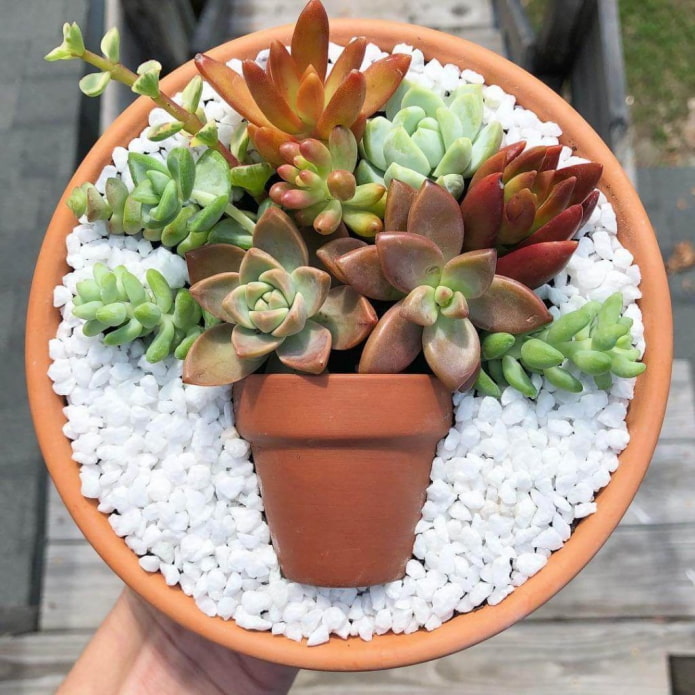
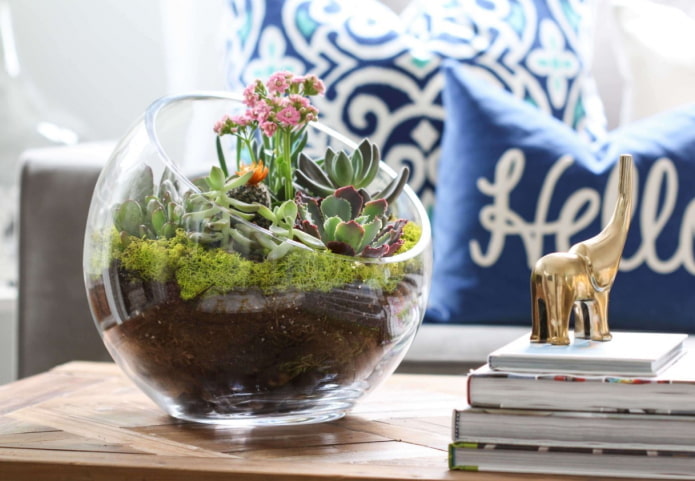
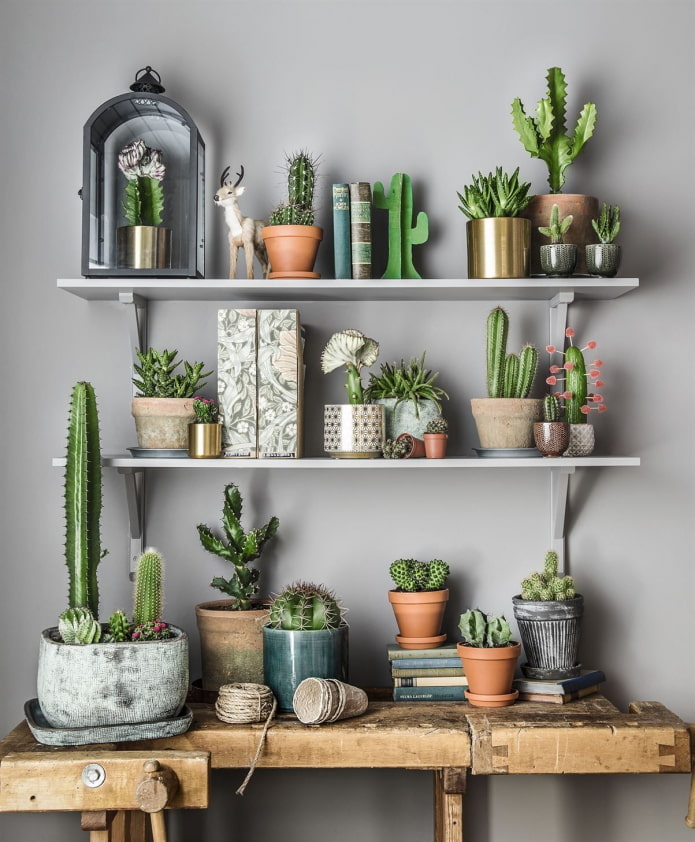
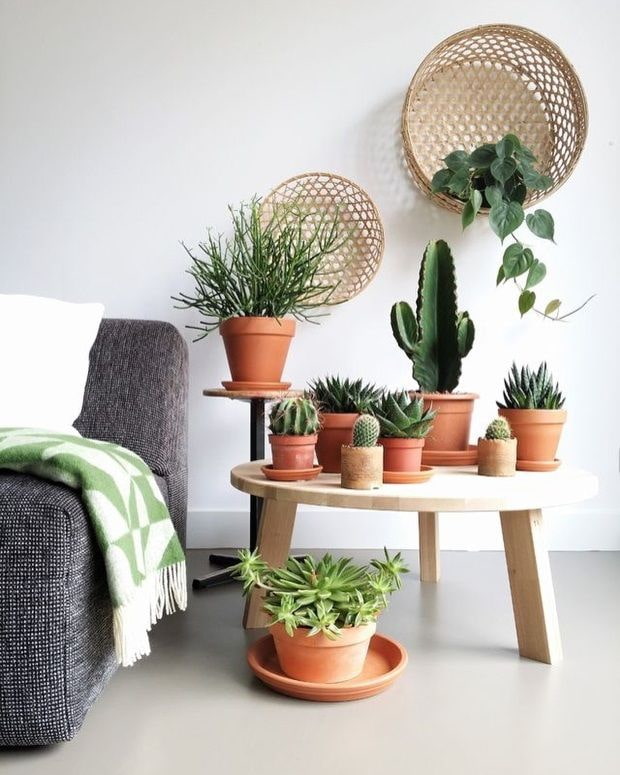
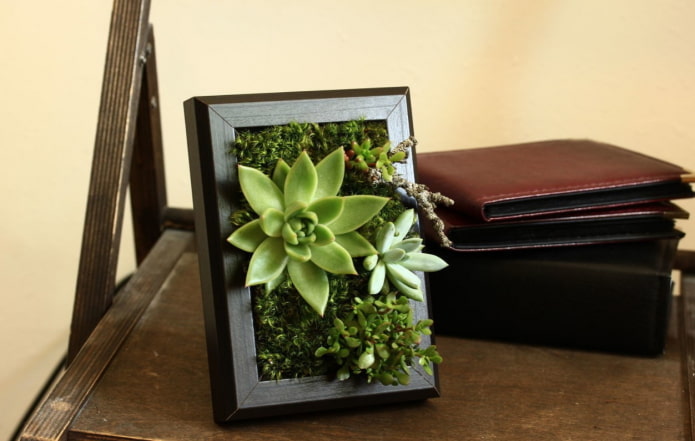
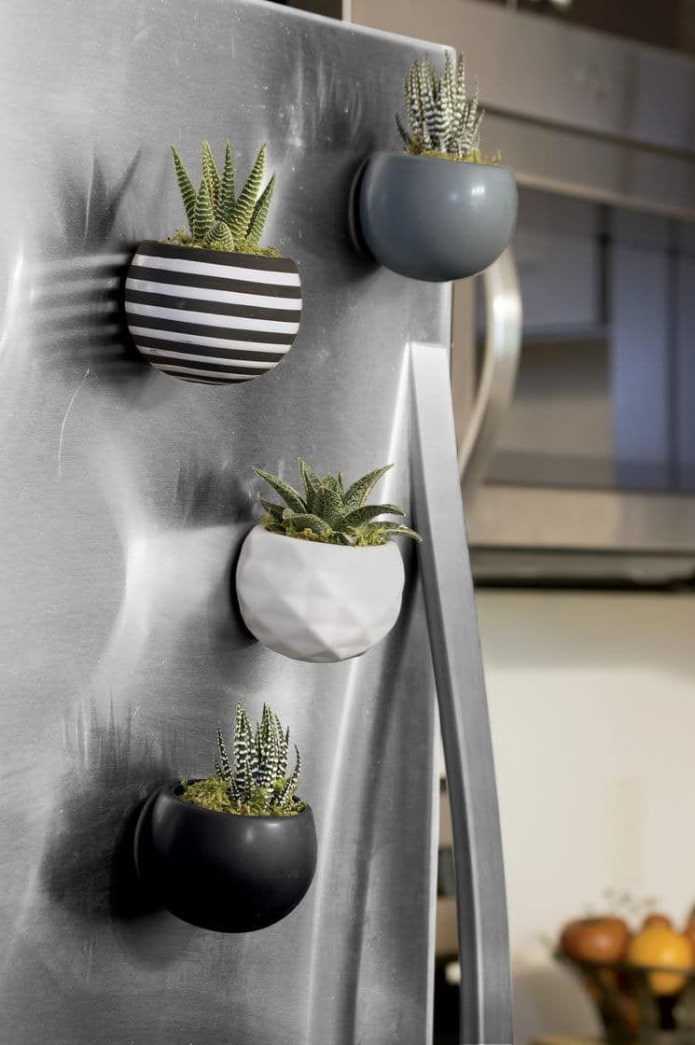
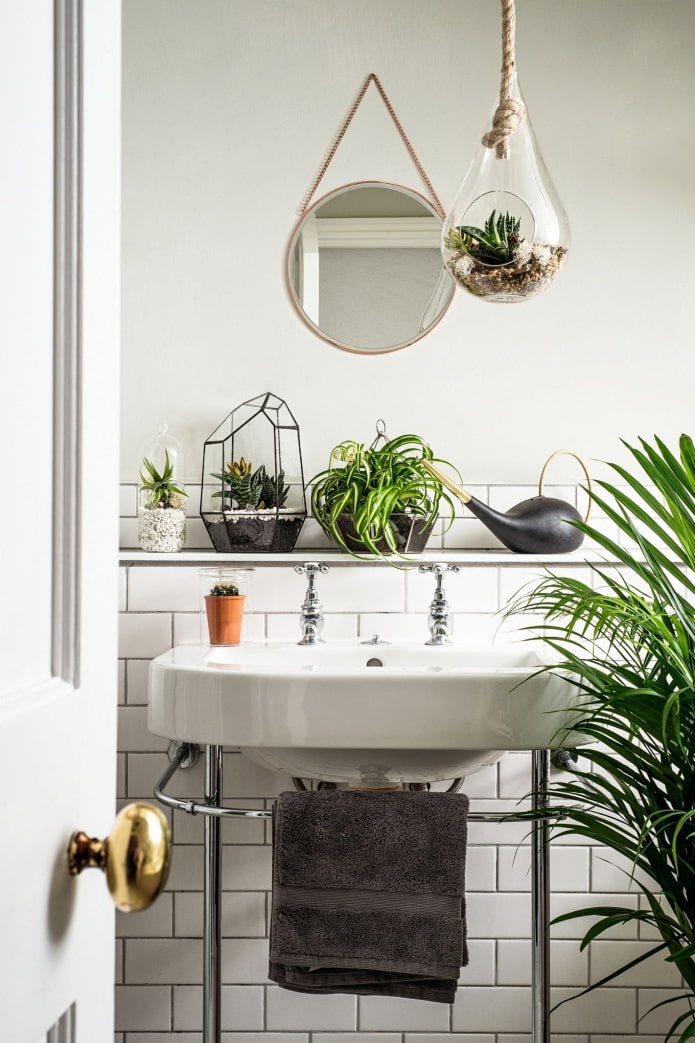
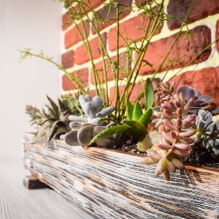
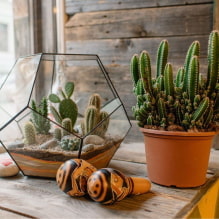
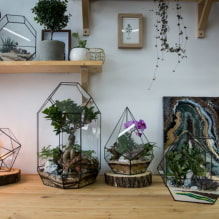
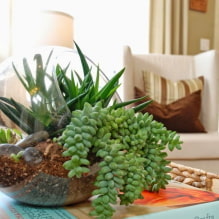
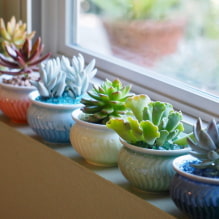
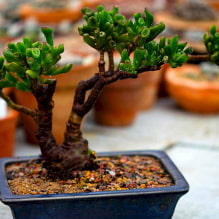
 13 bad habits a good housewife shouldn't have
13 bad habits a good housewife shouldn't have 24/7 home cleanliness - 4 secrets for the perfect housewife
24/7 home cleanliness - 4 secrets for the perfect housewife 6 hotels in Sochi that will give odds to the promoted foreign hotels
6 hotels in Sochi that will give odds to the promoted foreign hotels Top 10 interior design trends 2020
Top 10 interior design trends 2020 Rating of cheap TVs with Smart-TV
Rating of cheap TVs with Smart-TV New Year's LED garlands on AliExpress - we disassemble while it's hot, so that it's bright at home
New Year's LED garlands on AliExpress - we disassemble while it's hot, so that it's bright at home